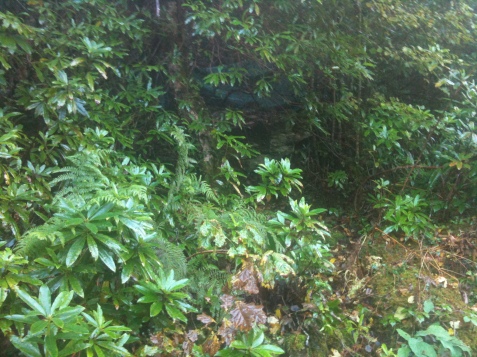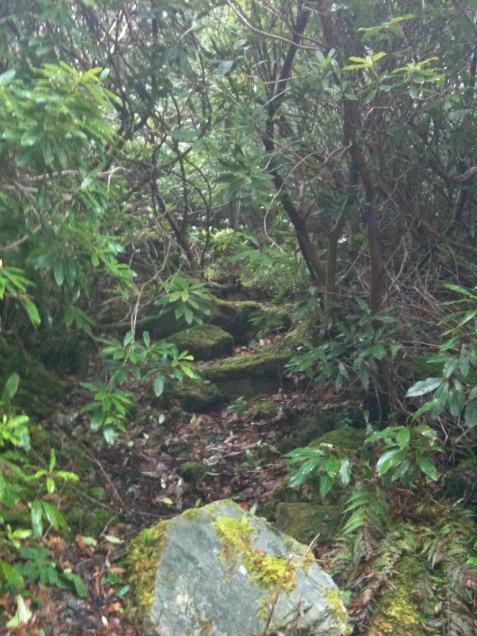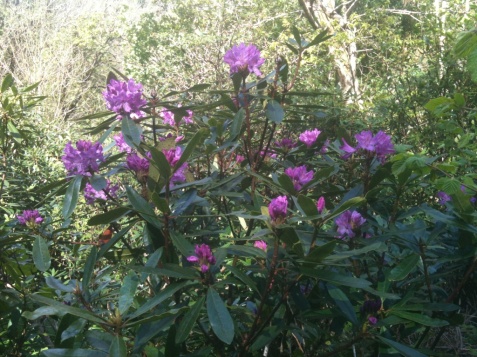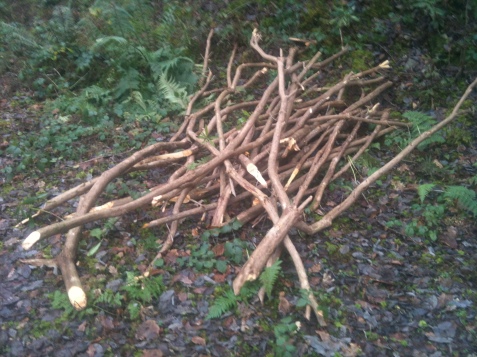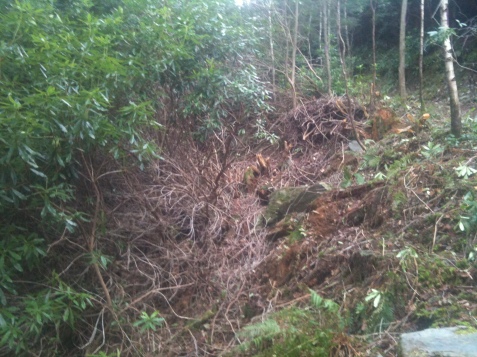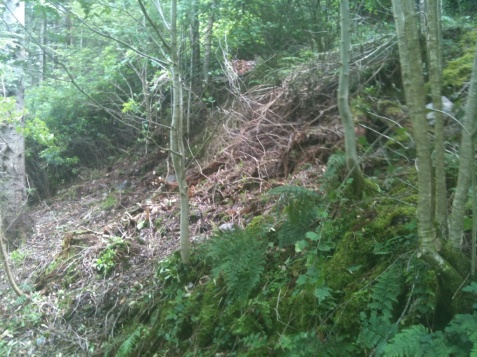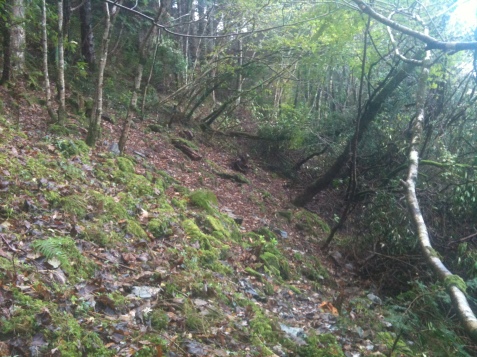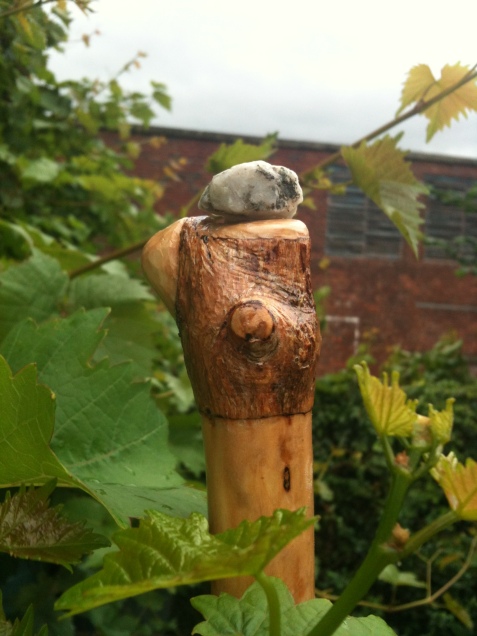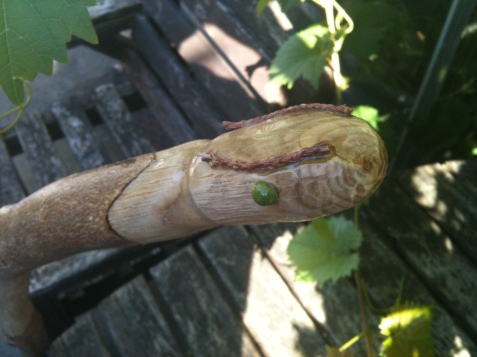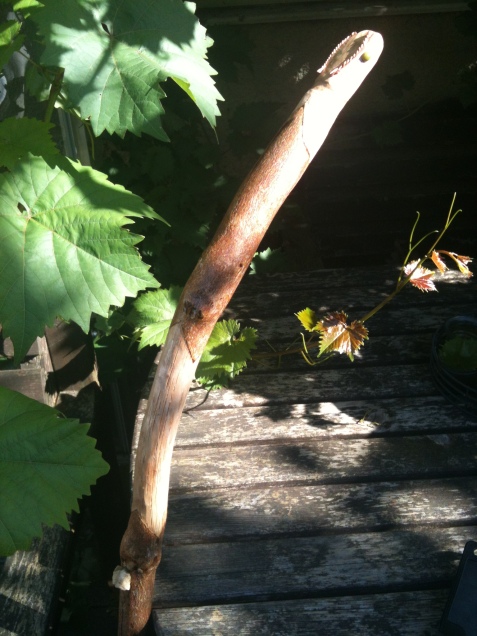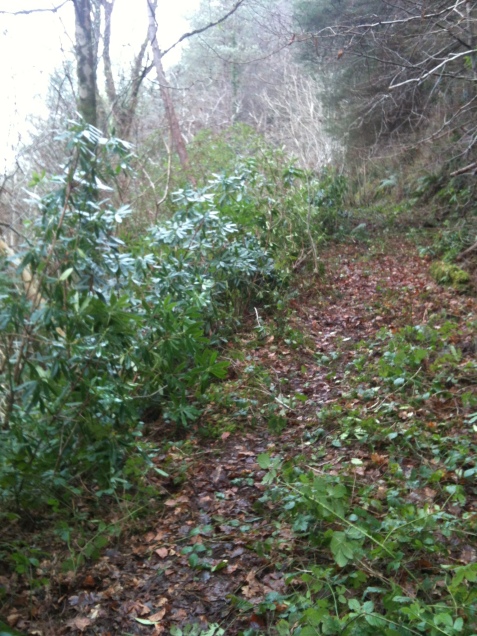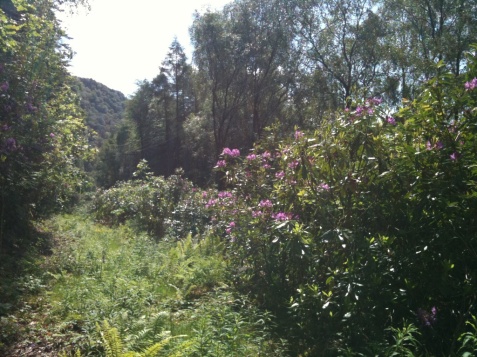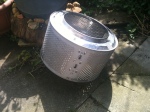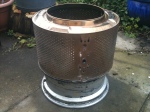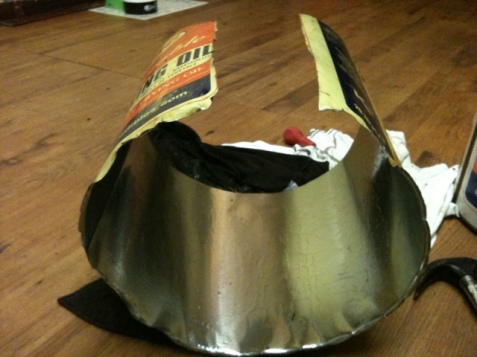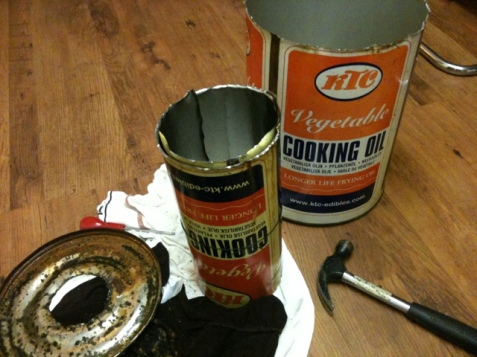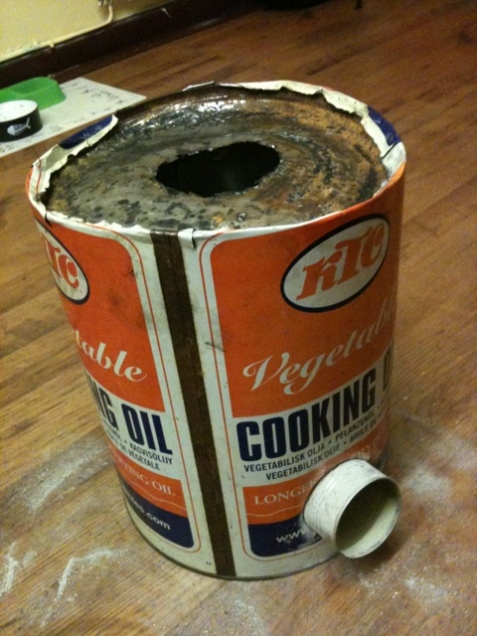Introduced to Britain by the Victorians, Rhododendron has become a very popular garden plant. Unfortunately however, one particular strain, rhododendron ponticum, has become invasive in British woodlands.
The plant tends to crowd out all other species, diminishing biodiversity and destroying the ecosystems which normally thrive in woodlands. They prevent light from reaching the woodland floor and can grow as tall as trees, the weight of their entangled branches even pulling trees down.
Many different approaches to controlling rhododendron have been tried throughout the UK. One approach is herbicide, in particular glyphosate weedkiller, which is injected into the rhododendron stems after drilling or sprayed onto young foliage. This approach is extremely expensive and leaves glyphosate residues in the soil. It also leaves a forest of dead rhododendron plants which in itself doesn’t necessarily result in the restoration of woodland ecosystems.
There is the ‘lever and mulch’ method, which aims to kill rhododendron without the use of herbicide. This method can be effective but is very labour-intensive and again does not let light in to the woodland floor for ecosystems to regenerate. Using machinery to shred and crush rhododendron has a similar result, and is very energy-intensive.
Valley Wood has just such an invasive rhododendron problem. But the more time I spend there, and the more I work with the landscape and the existing ecosystem, the less satisfied I have become with these traditional approaches to rhododendron control. I started wondering what a Permaculture approach to the rhododendron problem might look like.
The basic premise of traditional control methods is that rhododendron is an invasive alien and must be killed, uprooted, cleared completely from the site and surrounding areas in order to allow the indigenous woodland ecosystem to regenerate. Although some of the neighbouring woodland plots have had this treatment, the rhododendron has come back again, and it very soon became obvious to me that this kind of approach just could not work at Valley Wood.
So I started to do some research to learn more about rhododendron. Since it was so plentiful and tenacious, I wondered if a Permaculture approach would allow me to turn a problem into a benefit and begin to view it as a crop of some kind.
Rhododendron was originally introduced into some woodlands because it is a very dense, evergreen shrub, which meant that it provided excellent cover for game birds. Now, this property of course has not gone away, so I immediately realised that one good thing about my woodland is that there is ample cover for birds all year round. Many insects can be found on the rhododendron too – every time I work at clearing some of it, there is always a Robin following me around picking insects off the cut stems. It’s actually quite enjoyable to have some company while I work – I feel like the Robin is working with me, and getting his dinner at the same time. Some of the rhododendron plants are so huge and dense that it can feel quite magical walking around underneath them, like being in some kind of weird twisted fairytale forest.
So, the birds like it. And as it happens, so do the bees! Around May to June, when the rhododendron is in flower, there is an amazing display of huge purple flowers which provide large quantities of food for bees and other pollinating insects. This isn’t necessarily good for humans – honey made from bees which have been feeding on rhododendron flowers is actually poisonous and can make you quite ill! But for a couple of months at least, bees will be glad of the display. With the changing climate, I have even seen some rhododendron plants flowering in the autum, winter and spring.
Another property of rhododendron is that it makes excellent firewood – even when it is green. It is a fast-growing hardwood with a very high calorific content, and the stems of larger plants are so thick that they can easily be sawn up into logs which are perfect for either an open fire or a wood burning stove. I have taken rhododendron logs home to burn in my woodburner during the winter, but a particularly good use for the rhododendron firewood is on-site, where I need to keep warm during the winter when I am there working. Burning rhododendron means that I can generate firewood as I am clearing the rhododendron from the woodland, meaning that I don’t have to have a big stack of it seasoning and I don’t have to cut down broadleafed trees and season them for use as firewood on-site, I can leave them standing and growing. So rhododendron has become my staple firewood, leaving the trees for better purposes.
Here are some rhododendron stems ready to be cut into lengths for firewood:-
The smaller twigs and branches I tie into bundles with string, and one bundle makes a perfect firelighter. The dry twigs catch light incredibly easily, and the rush of heat is plenty to get bigger logs and branches burning. So butchering and using the different parts of the plant gives me everything I need to keep warm when I am working at the woodland. One of the principles of Permaculture is that everything has its place in the system – and the system at Valley Wood includes me, the woodland manager, and rhododendron to provide firewood to keep me warm. The rhododendron has gone from being an alien species which requires total eradication (impossible and a huge ongoing effort) to being a fast-growing hardwood wood fuel which keeps me warm even as I clear it to let light through to the woodland floor. A Permaculture approach where nothing is wasted, and everything has a function.
Even having found a place for rhododendron in the Valley Wood Permaculture system, there is far too much of it, and large areas need to be cleared to allow the woodland to regenerate. Once I’ve started cutting into an area of rhododendron, what is left looks very barren and bleak, as can be seen from these photos:-
In the photo above, you can see the normal woodland floor ecosystem in the foreground which has regenerated after rhododendron clearance – lush with moss, ferns, foxgloves and all manner of other plants and fungi. The newly cleared area in the background is barren, although there are seeds lying dormant in the ground. I sometimes assist the regeneration by sowing a mix of woodland flower seeds onto cleared areas.
In the area above, one effect of the huge rhododendron plants was that there were many trees which had grown very tall and spindly instead of bushing out, as they grew towards the light competing with the rhododendron. When I cut the rhododendron down, the weight of the branches pulled down many of these trees. But I found that what I had ended up with was a lovely collection of long, straight poles, perfect for shelter building! So I cut the fallen trees off at the base and used them. With sunlight now coming through to the woodland floor, the cut stumps will start to grow again, giving an area of hardwood coppice. In the photo above, you can see some of the tall, pole-like trees still standing in the background.
Whilst cutting rhododendron stems for firewood, occasionally I would come across one which was nice and straight, or curved in quite an interesting way. I started to wonder whether they would make good walking sticks. A few years back I bought a set of whittling knives, so I thought I would have a go at making a few rhododendron staffs.
I found the wood very pleasant to work with, the bark has an almost reddish tinge and the wood underneath it is lovely and white. There is a lot of quartz in the rock at Valley Wood, so I easily found small quartz crystals with which to adorn the new staffs. I found that I really enjoy making them. Apparently rhododendron wood has the property of protecting the staff owner from enemies! I have already sold one of these staffs and hope to sell more as my staff-making improves. And rhododendron wood seems to be an excellent, strong wood for walking sticks!
One of the ways which rhododendron spreads is when heavy branches bend down and touch the soil, and the branch puts out new roots at the point of contact. Like other hardwoods, rhododendron can be propagated from cuttings, but rhododendron is particularly easy to get to root.
There are a few places in the woodland where I have wanted some kind of screen to obscure the view of the campsite and shelter, or the forest garden. I did wonder about buying a couple of hundred hawthorn whips and planting them to make hedges. This seemed like quite a laborious and expensive option, the hedge would not really be tall enough for a couple of years at least and in the winter it would not serve as a screen as all of the leaves would fall.
Whilst cutting rhododendron, I noticed that after I had separated out the main stems for firewood, I was left with a big pile of branches of three or four nodes, which were very bushy and green – perfect hedging material, in fact. So I decided to take advantage of rhododendron’s easy rooting property, and simply took all of the cut branches and pushed the ends into the ground along the track above the campsite, forming a very dense, very instant and completely free-of-charge hedge!
Again, using the discarded parts of the harvested rhododendron plant in this way means that nothing is wasted and everything has a use – Permaculture in action.
There are even more uses for rhododendron – the leafy stems can be harvested and sold to companies providing foliage for florists. There are a couple of reports which make very interesting reading regarding generating an income from rhododendron:- Profit from Rhododendron and Rhododendron Foliage Harvesting.
My aim with Valley Wood is to eventually clear most of the rhododendron from the woodland, allowing the woodland ecosystem to regenerate. But in the process I will benefit from firewood logs, kindling, poles for building, free hedging and the rhododendron plants I leave in place will provide cover for birds and screens. I think that the Permaculture approach to rhododendron control says that although the plant has come to Britain as an invasive alien species, it is here to stay and must find its place in a balanced system. Left to its own devices in the wild, it will upset the ecosystem balance, but as part of a managed Permaculture system with humans included, it has a place as a productive plant which is kept under control by regular harvesting for its products, with no need for the damaging use of herbicides or energy-intensive industrial clearing efforts.
